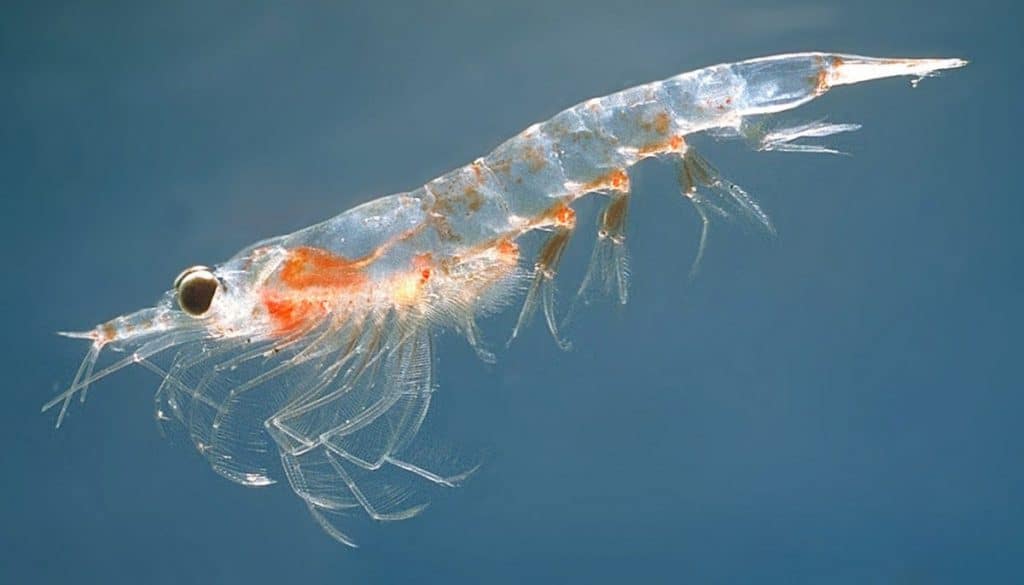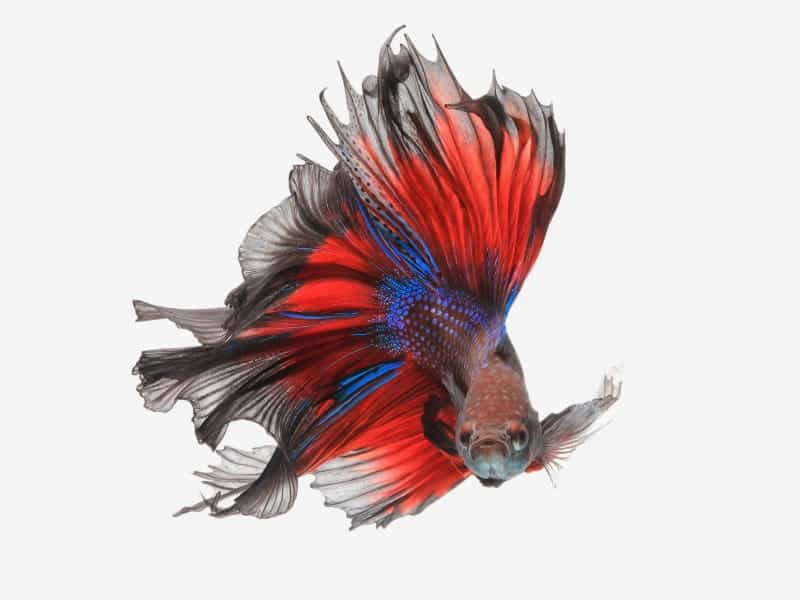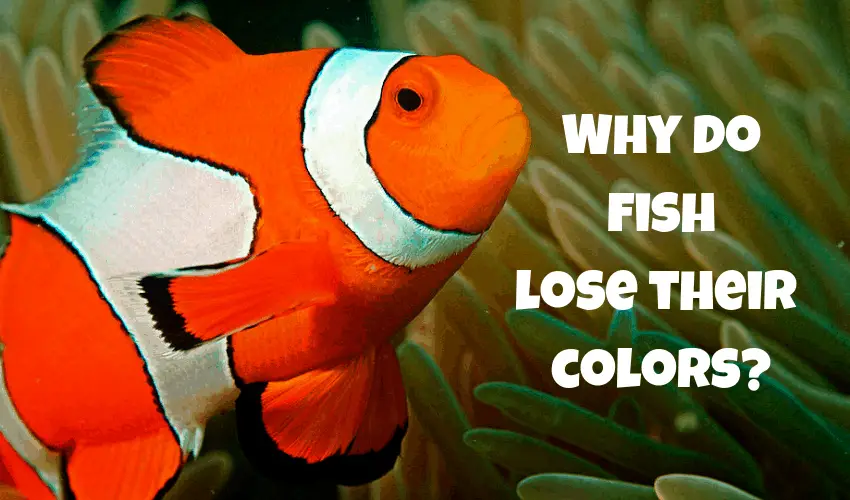Whether the preference is for the stunning stand out colors of many fish or the more muted tones of the less vibrant, we all have one thing in common. To keep those fish as colorful and magnificent as they should be. We look at why fish lose their colors and offer some suggestions.
Sadly, it isn’t always possible for fish to retain their magnificence, and from time to time we may notice that one of our beloved pets has faded or lost its coloration altogether. But why does this happen, why do fish lose their colors?
There are many reasons why a fish may lose coloration with some being unavoidable, and others down to the level of care that owners provide. That is not to say if your fish loses color that you are neglecting them, but rather that you may just not be fulfilling the requirements for keeping their color or color enhancement.
Table of Contents
Where Does Fish Color Come From?
To understand why care plays such an important part in the coloration of fish, we first need to understand how fish get their colors. This is simple and involves just three color pigments that are located within cells in the skin called chromatophores.
The three pigments are melanin (black), Xanthin (yellow), and Erythrin (red) each of which occurs in different chromatophores. All of the colors which we then see on our fish are a mixture of these. For example, orange is a mixture of red and yellow chromatophores, whilst brown is a mixture of yellow and black. Fish coloration is explained in more detail here.
Generally speaking, fish cannot and do not make their own color pigment, rather they have to consume it in their diet. In a natural environment, this is done by eating algae, shrimps, snails etcetera but these are missing from an aquarium.
Prevent Color Loss With A Color Enhancing Diet
To be clear, if color enhancing foods are not fed to your fish, they will lose their colors. Avoid incorrect feeding and you will see their color returning. Foods that we recommend to keep your fish full of vibrant coloration include vegetables, fruit, herbs, seaweed, proteins, and commercial pro-color foods.

Great color enhancing foods you could consider are:
- Bell peppers
- Kale
- Swiss chard
- Blueberries
- Cantaloupe
- Green seaweed
- Paprika
- Rosehip
- Saffron
- Krill
- Mysis shrimp
- Plankton
It needs to be noted that color enhancing foods should be fed as part of a balanced and nutritious diet and not as a stand-alone food. Also, that commercial products can cause ‘burning’ which results in odd patches of color appearing.
A good example of a color enhancing food for Tropical Fish is TetraColor Flake food.
Stress And Its Effect On Coloration
Whilst diet is the biggest contributor to your fish’s color or lack of, there is another factor to be taken into consideration which is stress. Stress can, and will, hugely influence whether your fish are full of color or not. There are, however, so many reasons why your fish can be stressed that it is not always easy to pinpoint the cause and deal with it.
Most commonly, the stress in your fish, and hence loss of color, is due to a lack of providing the right conditions and environment. This includes things such as:
- The right size aquarium
- The correct water parameters
- Suitable tankmates
- Appropriate maintenance
Providing all the above is of course fish 101 and hopefully being taken care of. However, other aspects of care that we sometimes neglect can also affect your fish’s stress levels. These include:
- Not providing shoaling fish with companions
- Lack of retreats for more timid fish
- Incorrect not enough lighting
In short, not providing the correct care for your fish will, without doubt, cause them to lose coloration. This is not to mention that with stress, usually comes illness which we definitely do not want.

Other Causes Of Coloration Loss
From time to time color loss is due to causes that are beyond our control and correction. Take Bettas, for example, they are renowned for changing color through their lifetimes which can involve a color loss too. This is totally normal, nothing to worry about, and something you cannot change.
Another natural example of color loss would be aging. Fish naturally lose their coloration as they age and there is little to nothing you can do about it. The same goes for fish that have been courting and breeding by showing brighter colors. These fade when the spawning is over and will not reappear until breeding restarts.
Conclusion: Why Do Some Fish Lose Their Color?
When it comes to the loss of color in our fish, the first thing to check is that they are being fed the correct diet and that they are receiving the correct care. This is because time and time again the loss of color can be put down to one of those things.
This is not to say that fish who suffer from loss of coloration are being willfully neglected. Rather, it is usually down to a lack of ‘color’ knowledge. This can be corrected by simply researching your fish species’ needs and providing them with the color care they need.
Do this, and there is a guarantee, that you will have an aquarium full of bright and vibrant fish that you can be truly proud of. For more help in setting up the perfect aquarium then read our complete guide for starting a fish tank.
[author title=”About the Author”]

I have been working in the tropical fish industry for over 30 years now and I’m still learning. Everyday is a school day in this hobby. In my spare time I play golf very badly!


